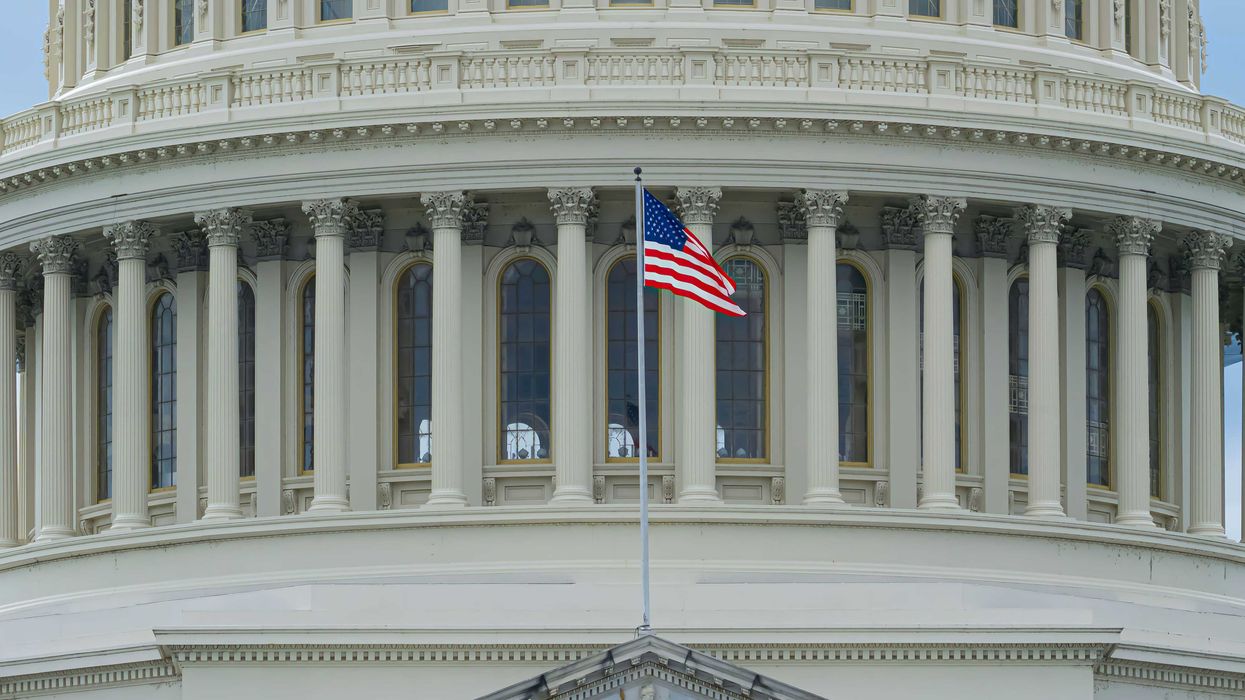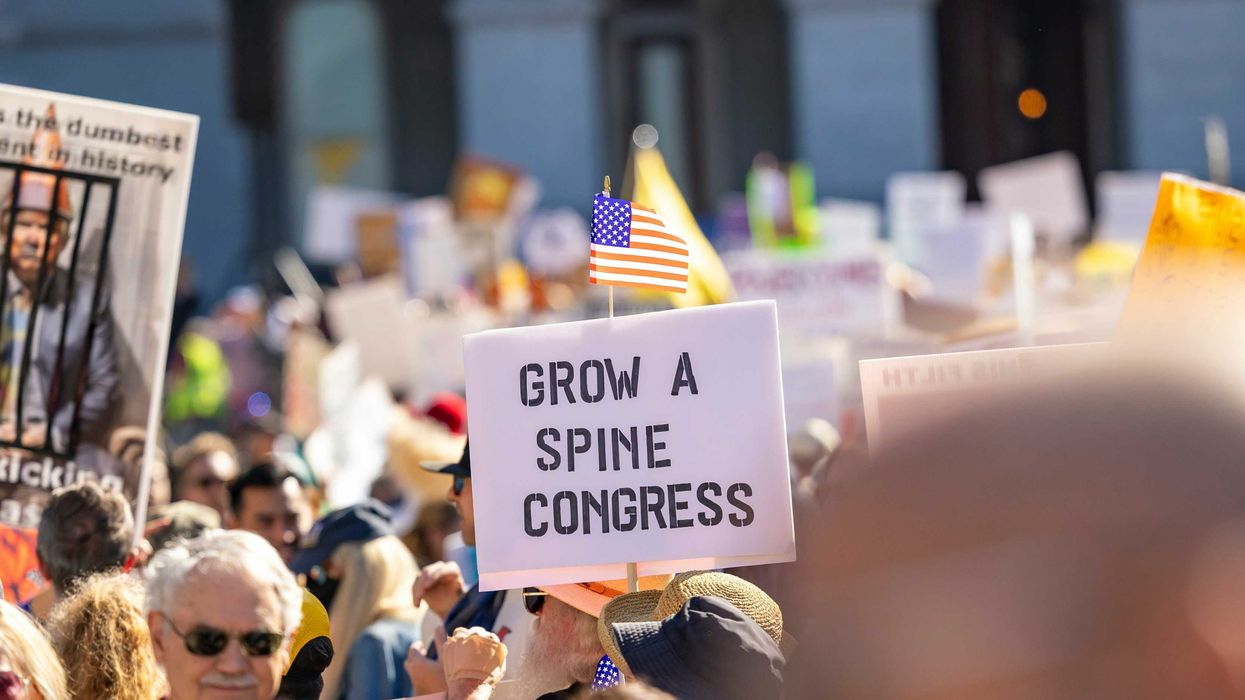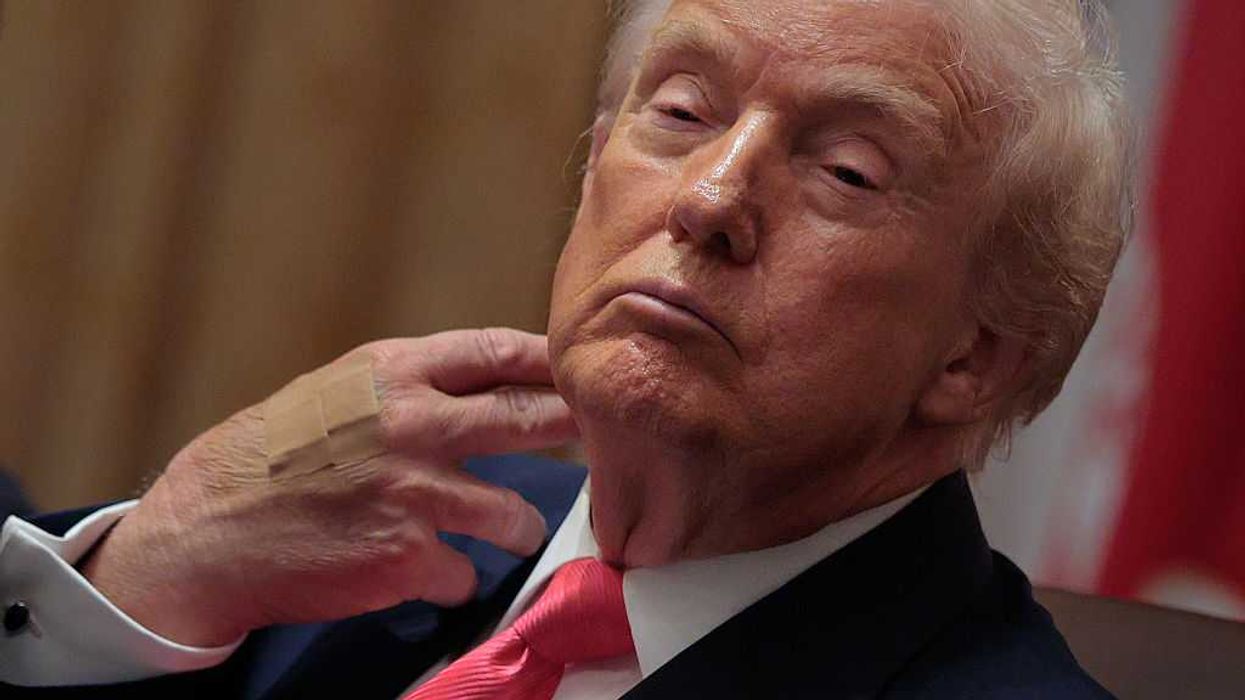Nearly 18 months after Donald Trump lost the 2020 presidential election, many of his backers continue to repeat the Big Lie. In fact, some of those “election deniers” are now seeking to control elections themselves.
While much has been written about those candidates for office, less attention has been paid to the effort to combat their campaigns. And the pushback is not just from the left. There is a growing industry of center-right groups that arose from anti-Trumpism and now see themselves as defenders of democracy.
One such organization is the Renew America Movement.
Trump’s claims that he was the rightful winner in 2020 spawned a “ Stop the Steal ” movement that led to the Jan. 6, 2021 insurrection at the U.S. Capitol and inspired nearly 100 election deniers to run for state office.
The source of the attack on the Capitol and ensuring political maneuvering centers around one person, according to Joel Searby, Renew America Movement’s political director.
“Most fundamentally what caused it was that President Trump said it was true [that he won the election] and he has such a strong and faithful following that they believed what he said,” Searby explained.
You can be part of the solution. The Fulcrum is a media partner for America Talks, an innovative problem-solving event that brings together people of different political persuasions for virtual, guided conversations. You’ll learn to understand a different perspective while working together for a better America. Register now.
However, Trump’s rhetoric would not have garnered such radical support if it were not for the existing framework of turmoil brewing within the nation’s political landscape.
“Of course, there was an entire ecosystem around him making the same case,” Searby said. “What drove a lot of that was an ecosystem of conspiracy theories and a lack of trust in our institutions and in the media, so a lot of people went to their corners,” says Searby.
Anti-Trump right come out swinging
With the nation becoming increasingly polarized, some organizations are trying to work across party lines to ameliorate the problems caused by such deep division. That’s where conservative outfits like The Bulwark and RAM come in, taking a stand against the increasingly radical nature of the Republican Party, with some even choosing to walk away from their affiliation with the GOP entirely.
RAM was founded by anti-Trump Republicans in 2021, including former Trump administration officials, governors, members of Congress and business leaders. The group pledges to work with Republicans, Democrats and independents to advocate for a healthy democracy, regardless of party affiliation. One particular facet of the movement focuses on electing officials who represent bipartisan values.
“People who see the risks to our democracy right now are putting down a lot of their own personal preferences in order to build alliances to work against the most extreme elements of our parties, particularly on the Republican side,” Searby said.
Searby pointed to Georgia’s lieutenant governor, Geoff Duncan, as an example of a pro-democracy Republican who faced ostracization from his party and loss of support from many constituents in light of his contradiction of voter fraud claims.
A lifelong Republican and staunch Trump supporter, Duncan “checks every box on every conservative list you could imagine,” Searby said. “Even as someone of that high degree of integrity and credibility in the Republican party, his voice meant almost nothing to Trump supporters. … It’s just a really concerning and disturbing example of how tight the grip is on this lie.”
Additionally, some have begun to advocate for a legitimately competitive third party, particularly one driven by many former Republicans who no longer feel aligned with the representation and values expressed by the party. Searby fits this mold himself.
A former Republican, Searby has been working for independent candidates, including on RAM co-founder Evan McMullin’s 2016 presidential campaign. McMullin is now challenging GOP Sen. Mike Lee of Utah as an independent.
“I see a lot of energy in the third way space, of people who want to see an entirely new way in our politics, not just trying to fix the two broken parties but thinking of new ways to creatively disrupt the system,” Searby said.
But groups like RAM or the Democrats leading efforts to recruit candidates for election administration positions are not aiming at a stationary target.
Trump supporters are trying to build on their unsubstantiated claims of voter fraud by holding “ election integrity summits.” And those who believe the Big Lie are not easily persuaded by facts, according to Sarah Longwell, publisher of The Bulwark.
Moving forward
Obviously, there is still ample room for growth within these movements and the American socio-political atmosphere in general. With groups like RAM building a following or The Bulwark attracting a large audience, organizers are optimistic.
“We know we disagree on core policy issues, but what we agree on is the protection of our democracy and pushing back against lies and authoritarian rhetoric so we’re building alliances around those things,” Searby said.
The upcoming 2022 midterm elections and, inevitably, the 2024 presidential election will set the tone for the future dynamics of politics for years to come. Recent studies have found that, while more moderate voters are turned off by polarization within each party, polarization actually leads to higher participation among those who lean strongly to either side.
“Those who were profiting from political work were incentivized to divide us, [which] further incentivizes our elected leaders to play that game,” Searby said.
That’s why he says one of the most significant ways people can help change the tone is through financial contributions to bipartisan campaigns and movements.
“There’s a lot of money flowing around at the very highest level in this country, so it’s a little disheartening that those with the means [aren’t supporting this movement more],” he said. “On the flipside, those people who are giving their hard-earned $50 to $100 donations to places like Renew America, that’s where you get a lot of hope.”
While Searby fears the “broken parts” of the American political system – gerrymandering, partisan primaries, the Electoral College and some election processes – may lead to more violence if not checked, he sounded an optimistic note.
“The center of gravity right now in the political reform and ‘new way’ space is really about being united to protect our democracy against authoritarian tendencies.We can find a lot of common ground on that,” he said. “We are a beautifully pluralistic country, and we have to remember how to work together across all these various divides for these bigger picture goals.”



















 Despite signing a mortgage that pledged he would live in each house, Trump listed both homes as rentals. Palm Beach Daily News via Newspapers.com. Redactions by ProPublica.
Despite signing a mortgage that pledged he would live in each house, Trump listed both homes as rentals. Palm Beach Daily News via Newspapers.com. Redactions by ProPublica.
 In 1993, Trump signed a mortgage for a “Bermuda style” home in Palm Beach, pledging that it would be his principal residence. Just seven weeks later, he got another mortgage for a seven-bedroom, marble-floored neighboring property and attested that it too would be his principal residence. Obtained by ProPublica
In 1993, Trump signed a mortgage for a “Bermuda style” home in Palm Beach, pledging that it would be his principal residence. Just seven weeks later, he got another mortgage for a seven-bedroom, marble-floored neighboring property and attested that it too would be his principal residence. Obtained by ProPublica
